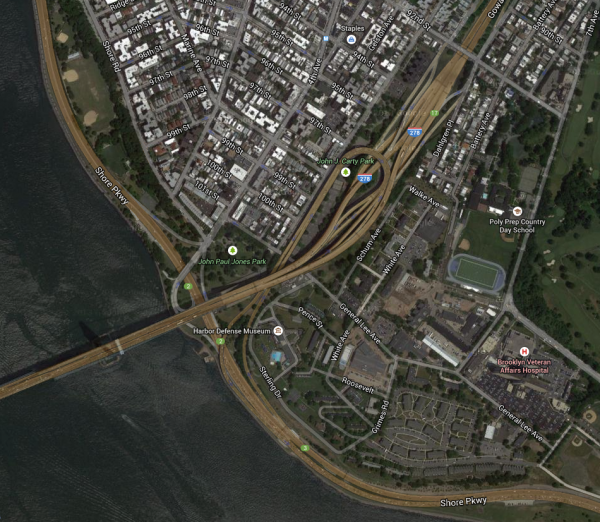Weather-wise this is Jeremy’s happy place. I’ll take cloudy, chilly, watery and mossy over hot and dry any day. Clear blue sky with unobstructed blazing sun is the absence of weather.
And, after driving here for a solid month, here’s my take on Portland traffic: yes, it’s bad, but there are workarounds.
Portland traffic suffers from a daunting variety of issues, so much so I’m often surprised driving here isn’t worse than it is. Chief among these issues, unsurprisingly, is volume. Like nearly all American cities Portland area roads are carrying way, way more cars than they were designed to accommodate. Just the other day I heard of a report stating the Interstate 5 bridge is now routinely carrying more traffic than previous peak numbers from as little as a year ago. I guess i’m not the only one who enjoys a cooler, wetter climate.
Additionally Portland roads suffer from a smorgasbord of gotchas that snag visitors and old time residents alike. I’ve driven various vehicles in New York, Boston, Chicago, Minneapolis, Salt Lake City, Denver, Seattle and San Francisco and I believe Portland wins the prize for the most vanishing right lanes, left exits and local-streets-as-ramps-to-highways of any of the aforementioned cities. The disappearing right lanes are possibly the biggest offender. I’m at the point where I simply assume the right lane will evaporate at some inconvenient moment so I’m always angling to reach the center in a three-lane situation.
The other constraint is the topography this city sits upon and is surrounded by. First off there’s the Willamette River to deal with, so there must be lots of bridges. Second, downtown occupies the entirety of a flat area along the river and backs right up against steep hills. Unlike cities of the planes these hills make it cost-prohibitive to construct the typical ring highway all the way around the downtown. Highway 26, the main feeder route in from the western suburbs doesn’t meander because it’s scenic. It follows an increasingly narrow canyon that ends with a short tunnel into downtown. Making it or several other roads wider would require moving vast amounts of rock and stabilizing the remaining walls. A project to do just that is already behind schedule and over budget near the Sellwood Bridge which is being significantly enlarged to take some of the stress off the Ross Island Bridge a few miles north.
Another complicating factor is Portland sits at the intersection of I5, the only north/south highway, and the start (or end) of I84, a major east/west highway. Every semi-trailer carrying produce from California headed for points north or east is going to cross that pinch point (including the aforementioned I5 bridge). There is Hwy 205 on the east side which, at least in theory, offers a route for thru trucks bypassing downtown, but it adds miles to the trip while traversing densely populated suburban zones and, despite being eight lanes in one section, can still be bumper to bumper. 205 also carries the bulk of traffic to the Portland Airport.
 My personal favorite offender is the local-roads-for-access issue. Coming from New York City/Long Island, the domain of master builder Robert Moses, local streets were never used to connect highways. Entire neighborhoods were torn down or brutally bisected to make way for high-speed ramps that connected one highway with another. The worst example of this I deal with regularly is the approach to the Ross Island Bridge heading from the west side toward the east. To go from I5 to east across the bridge you must exit, mix with traffic trying to get on I5 southbound (no small feat during rush hour), turn right up a residential street, stop, turn right again on a second residential street, cross an uncontrolled crosswalk that feeds a major pedestrian bridge, then make the final approach to the bridge then stop and wait for an opening in bridge traffic. There is no onramp. During the evening rush residents of this area get to deal with bumper to bumper cars crawling past their houses. Building a proper onramp would require demolishing dozens of houses and constructing a complicated elevated ramp to accommodate the slope from I5 up to the bridge, but just take a look at what was done to Ft. Hamilton, Brooklyn, to accommodate access to the Verrazano Bridge. For Moses, who invoked eminent domain more than any other developer, this would be a piece of cake.
My personal favorite offender is the local-roads-for-access issue. Coming from New York City/Long Island, the domain of master builder Robert Moses, local streets were never used to connect highways. Entire neighborhoods were torn down or brutally bisected to make way for high-speed ramps that connected one highway with another. The worst example of this I deal with regularly is the approach to the Ross Island Bridge heading from the west side toward the east. To go from I5 to east across the bridge you must exit, mix with traffic trying to get on I5 southbound (no small feat during rush hour), turn right up a residential street, stop, turn right again on a second residential street, cross an uncontrolled crosswalk that feeds a major pedestrian bridge, then make the final approach to the bridge then stop and wait for an opening in bridge traffic. There is no onramp. During the evening rush residents of this area get to deal with bumper to bumper cars crawling past their houses. Building a proper onramp would require demolishing dozens of houses and constructing a complicated elevated ramp to accommodate the slope from I5 up to the bridge, but just take a look at what was done to Ft. Hamilton, Brooklyn, to accommodate access to the Verrazano Bridge. For Moses, who invoked eminent domain more than any other developer, this would be a piece of cake.

